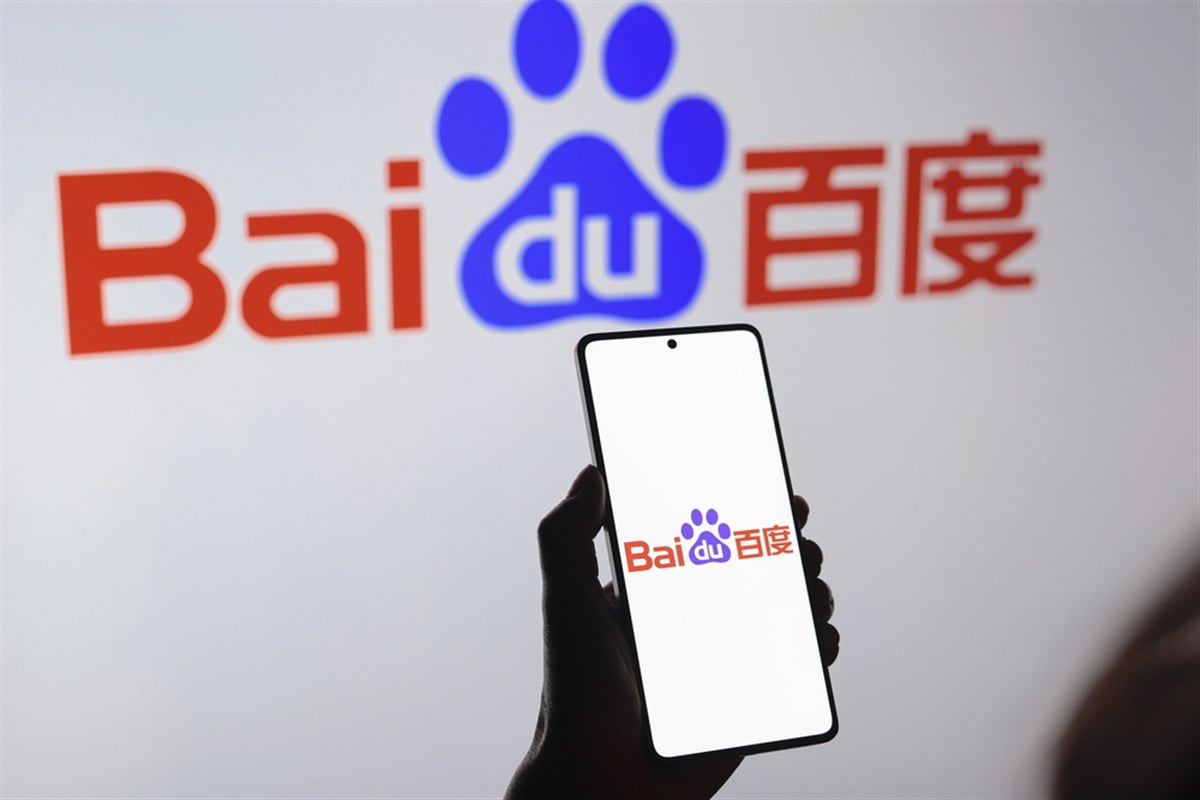 Recent volatility in shares of RH have caused some doubt around the retail sector, though that doesn't mean all peers must follow the path... ͏ ͏ ͏ ͏ ͏ ͏ ͏ ͏ ͏ ͏ ͏ ͏ ͏ ͏ ͏ ͏ ͏ ͏ ͏ ͏ ͏ ͏ ͏ ͏ ͏ ͏ ͏ ͏ ͏ ͏ ͏ ͏ ͏ ͏ ͏ ͏ ͏ ͏ ͏ ͏ ͏ ͏ ͏ ͏ ͏ ͏ ͏ ͏ ͏ ͏ ͏ ͏ ͏ ͏ ͏ ͏ ͏ ͏ ͏ ͏ ͏ ͏ ͏ ͏ ͏ ͏ ͏ ͏ ͏ ͏ ͏ ͏ ͏ ͏ ͏ ͏ ͏ ͏ ͏ ͏ ͏ ͏ ͏ ͏ ͏ ͏ ͏ ͏ ͏ ͏ ͏ ͏ ͏ ͏ ͏ ͏ ͏ ͏ ͏ ͏ |
| | Written by Gabriel Osorio-Mazilli 
As President Trump announces the latest round of trade tariffs on the so-called “Liberation Day” of the U.S. economy, some traders may be surprised to see longtime favorites fall from grace. Yet this reaction aligns with a market gripped by extreme uncertainty. One retail name, in particular, is bearing the brunt—creating a different kind of opportunity. This isn’t a “buy the dip” moment; in current conditions, that would resemble catching a falling knife. Case in point: shares of RH (NYSE: RH) plunged nearly 40% in a single day, marking some of the worst price action in its peer group and setting the stage for potential further fallout amid the tariff turbulence. However, despite the bearish implications this situation may have brought to the industry, there are other stocks within it that could present a much better setup compared to RH stock. These stocks allow investors to align themselves with better safety and upside due to stability and underlying preferences shown in price action. This is where peers like Williams-Sonoma Inc. (NYSE: WSM) and Wayfair Inc. (NYSE: W) come in to aid struggling retail portfolios. Why Did RH Suffer The Most? As these tariffs target countries like Vietnam, China, and India, most (if not all) of the companies that import textiles and furnishings are set to suffer in the short term. These Asian nations are responsible for supplying either the raw materials or even the finished products to these brands in the United States. Even private companies like Ikea illustrate the strain; if investors were to order certain products for shipping, unexpected delays could arise—an uncommon issue for a brand known for efficiency. It highlights how challenging supply chains may become in the near term. However, some are better prepared for the future, which might be the choice to pass down added shipping and logistics costs to underlying consumers. This is why RH was the worst performer in the group, considering that Williams-Sonoma and Wayfair fell by less than half of what RH experienced the day after the tariff announcement. With this in mind, those looking to benefit from the competitive environment these tariffs are creating should consider Wayfair and Williams-Sonoma moving forward. Premium Products Help Williams-Sonoma’s Future Unlike RH, which targets affluent consumers with high-end, luxury home furnishings, Williams-Sonoma serves a broader customer base across both mid-market and premium segments. This diversified positioning can make Williams-Sonoma less volatile and more resilient during economic downturns. More than that, the recent company financials show that Williams-Sonoma had been preparing in accordance with tariff expectations, as over $230 million worth of inventory had been bought over the past quarter, potentially securing these lower-cost units ahead of time of supply shocks. Because of these two factors, Investors can notice that analysts from Jefferies Financial Group decided to reiterate their Buy rating on the stock as of late March 2025, this time also keeping a valuation target of as much as $208 per share. Williams-Sonoma has outperformed RH stock’s fall and now implies a net upside of 50% from today’s prices. Other analyst consensus, such as upcoming earnings per share (EPS), might also be useful to investors. Knowing that analysts now expect Williams-Sonoma to report up to $3.64 in EPS for the fourth quarter of 2025, the double-digit percentage growth from today’s $3.28 in reported EPS allows the stock to fulfill this upside view. A Nimble Business Enables Wayfair to Outperform Selling off far less than RH and Williams-Sonoma, Wayfair’s relative strength may raise eyebrows. Simply put, its e-commerce model eliminates many of the overhead costs tied to operating brick-and-mortar businesses like RH or Williams-Sonoma. Because of this fundamental setup, the company is able to create enough doubt among short sellers today, as can be seen in the 3.5% decline in short interest over the past month alone. This is a clear sign of bearish capitulation or even disappointment when realizing Wayfair might be best prepared to weather these tariffs. All told, Wall Street analysts must have a reason to keep a $56.8 consensus price target on Wayfair stock today. This target calls for as much as 126.8% upside from where it trades today, creating a fantastic risk-to-reward profile for investors looking to take advantage of this recent trade tariff uncertainty.  Read This Story Online Read This Story Online | Something fascinating happened in April...
While a lot of Wall Street institutions were opening new positions in a falling stock, something different showed up on my screen.
A special set of candles had just turned green - signaling the kind of momentum surge I'd seen only a handful of times before.
What happened next?
The stock soared 45% on the underlying stock in just a few weeks and 227% for anyone who traded the options.
Naturally, there would have been smaller wins and those that would not have worked out, but this wasn't some penny stock or crypto play…
It was ARM Holdings - a major semiconductor player that had just shed 9% of its value. I've put together everything you need to know here. |
| Written by Leo Miller 
The embattled EV maker Rivian Automotive (NASDAQ: RIVN) recently got some much-needed good news. Shares rose nearly 8% on Mar. 27 after President Trump announced big-time tariffs on foreign cars and components. This announcement came a week after a large downgrade by analysts at Piper Sandler, which caused shares to fall by 4%. The company also released two other pieces of significant news on Mar. 26. Below are the specifics surrounding these important pieces of news. First, I’ll discuss the news that came from Rivian itself, then go into detail on this new round of tariffs. I’ll add perspective along the way on whether these are positive or negative developments for Rivian shares. Micromobility Spin-Out Increases Focus on Core Operations Rivian’s Mar. 26 press release contained two key announcements. The main headline was that the firm is spinning out its micromobility business. This previously internal part of the business is being sold as a new firm called Also. Rivian will retain a substantial minority stake in the business. Many believe Also will make products like electric scooters, e-bikes, and other small electric vehicles. But, the details are still unclear. It makes sense for Rivian to be active in developing products adjacent to electric cars. InsideEVs points out that the micromobility market grew at a brisk pace from 2018 to 2023. Compared to 2023 levels, McKinsey and Company expects the number of micromobility trips to increase by 95% to 306% by 2035. This could represent a substantial secondary revenue stream for Rivian. However, Rivian isn’t in a position to spend significant time on non-core business activities. In Q4, the company posted a positive gross margin for the first time ever. Even producing vehicles profitably has taken the firm around three years. It still has a long way to go to consistently positive free cash flow or net income, which is vital to Rivian’s survival. It is plausible that the micromobility business was a distraction from this goal. Thus, no longer operating this business is a good move that intensifies Rivian’s focus on its most important objectives. Additionally, Rivian can still participate in micromobility upside through its investment in Also. R2 Update Keeps Production Worries at Bay A sidebar in this press release, but arguably more important overall, was an update on Rivian’s core business. The company said it continues to progress on launching its next vehicle, the R2. The company still expects that R2 deliveries will begin in the second half of 2026. This is another welcome update, as Rivian has faced significant production delays in the past. The R2 is extremely important in Rivian’s path to profitability. The company expects material costs for the R2 to be around half that of the second-generation R1. Additionally, it expects a more than 50% reduction in non-material costs of goods sold. This likely includes labor and overhead costs needed for actual vehicle production. If these cost reduction forecasts come to fruition, the company’s gross margin and overall profitability could improve greatly. They could also significantly benefit revenue growth. The R2 will start at a price of $45,000, well below the over $90,000 average selling price of Rivian’s current vehicles. This should help open up the firm to a market of less affluent consumers. However, the firm will need to strike the right balance between price and quantity to drive higher revenue growth. Tariffs Can Make Rivian Vehicles More Competitive in the Fierce Auto Market The tariff news was the biggest reason for the strong recent move in Rivian’s stock price. All foreign autos and foreign auto components will be subject to a 25% tariff. Rivian makes all of its vehicles at its plant in Illinois, meaning the firm’s vehicles will not directly be subject to the tariffs. However, the tariffs will still negatively impact Rivian, as it sources some of its components internationally. Higher component costs create a bit of a quandary for a firm already struggling with profitability issues. Still, this news is likely a net win for Rivian and Tesla (NASDAQ: TSLA) as it increases their price competitiveness versus many other automakers. Overall, these news items are positive developments for Rivian. However, the firm’s success still hinges greatly on the successful rollout of the R2, which is still around a year away. This stock remains one to watch. Investors should maintain a keen focus on management commentary surrounding the R2 rollout and tariff implications.  Read This Story Online Read This Story Online | While other cell phone carriers are always looking for ways to squeeze every last penny out of their customers, my company pays users for the 40 hours a week they are using smartphone apps, listening to music, and watching videos online with their phones.
And you can join us for just $0.26 per share. Plus, when you invest now, you can get up to 100% bonus shares! Let's change the future of mobile together. |
| Written by Jeffrey Neal Johnson 
Chinese tech company Baidu, Inc. (NASDAQ: BIDU) is often compared to Alphabet's Google (NASDAQ: GOOG) due to its dominant search engine in China. However, the company's stock performance has declined about 15% over the past year, even as it aggressively advances artificial intelligence (AI) technology through its Ernie large language models, expands AI Cloud services, and develops its Apollo Go autonomous driving platform. Thus, investors are left to evaluate a potential crossroads for Baidu’s stock. This crossroads presents investors with a challenging decision: Should they weigh the recent 20% six-month and 15% one-year declines against Cathie Wood's ARK Invest's recent $12 million investment in Baidu? Does Wood's confidence in Baidu's potential outweigh the risks associated with the Chinese market, signaling a buying opportunity for those willing to take on the complexities? Baidu's Pivot to an AI Powerhouse Baidu initially built its dominance on internet search, securing a significant market share in China. The company has since transformed into an AI-focused organization. Although online marketing services, primarily search advertising, remain a key source of revenue, this segment has shown signs of slowing down. In contrast, Baidu's AI Cloud division has become a significant growth driver, holding the top spot in China's AI public cloud market for five consecutive years. Baidu's AI ambitions are further shown by the Ernie family of large language models, with recent versions like Ernie X1 and 4.5 competing against global counterparts and processing billions of API calls daily. The company's autonomous driving unit, Apollo Go, operates robotaxi services in multiple cities, has achieved significant driverless operation milestones, and recently expanded its testing to Dubai and Abu Dhabi. Baidu also holds a majority stake in the streaming service iQIYI and recently acquired YY Live Streaming. Cathie Wood's Re-Entry: The $12M Bet Cathie Wood's ARK Invest made a move in late March 2025, purchasing around $12 million worth of Baidu shares across two of its exchange-traded funds (ETFs). This move marks a significant re-engagement with the Chinese tech giant after ARK Invest significantly reduced and eventually exited its Baidu holdings by late 2022 due to a heightened regulatory environment in Beijing. While ARK Invest has not provided specific commentary on the transaction, the purchase aligns with the firm's focus on disruptive innovation. Baidu's advancements in generative AI with Ernie and its leadership in China's autonomous vehicle market through Apollo Go fit the profile of transformative technologies that ARK Invest seeks. Market observers may interpret Wood's investment as a signal that, despite ongoing risks, Baidu's progress in AI and its current valuation present a compelling growth narrative. Is Baidu Undervalued After the Pullback? As of early April 2025, Baidu's stock was trading around $92. Year-to-date, this represents an approximate gain of 8.7%, but it is still much lower than its 52-week high of $116.25. The stock has declined by roughly 15.5% over the past year. This pullback has led to a "buy the dip" argument. The trailing-twelve-month price-to-earnings (P/E) ratio for Baidu is around 10, which is often considered low for a tech company that has significant growth initiatives. This could indicate that the stock is undervalued. A forward P/E ratio of approximately 12.5 suggests that earnings are expected to grow. The price/earnings-to-growth (PEG) ratio of close to 2.96 indicates that the stock price may be more in line with growth expectations than a deep value play. Other metrics like price-to-sales (around 0.24) and price-to-book (around 0.86) also seem low when compared to many of Baidu’s peers. The consensus rating among the 19 analysts covering the stock is Hold, with 12 hold ratings and 7 Buy ratings. The average analyst price target of $111.25 suggests a potential upside of more than 21% from the current stock price. However, there is a wide range of price targets (from $85.00 to $141.00). Several investment banks have also recently downgraded their ratings. This reflects the ongoing uncertainty about the company's near-term trajectory and the broader risks associated with Chinese equities. Baidu's Potential vs. Its Challenges When considering Baidu as an investment, it’s important to balance its strong growth potential with notable risks. Key strengths include its dominance in China’s internet landscape, advancements in AI through Ernie and AI Cloud, progress in autonomous driving with Apollo Go, and a rapidly expanding ecosystem. Its attractive valuation, marked by a low P/E ratio, an active share repurchase program, and recent investment from Cathie Wood, further suggests potential gains. However, regulatory uncertainty in China's tech sector, fierce competition, a weak online advertising market, and the substantial investments needed for AI and autonomous driving to become profitable pose significant challenges. Additionally, macroeconomic conditions in China and geopolitical tensions between the U.S. and China introduce further risks that investors must carefully evaluate. Is Cathie Wood's Baidu Bet Worth Following? Baidu is undeniably making significant strides in AI and autonomous vehicles. Its recent stock performance, coupled with Cathie Wood's renewed investment, hints at a potential buying opportunity. However, the regulatory landscape in China and intense competition pose substantial risks. While Wood's investment signals confidence, it does not negate these risks. Investors should carefully weigh Baidu's AI growth potential against the geopolitical and market-specific challenges inherent in Chinese stocks before making an investment decision.  Read This Story Online Read This Story Online | |
| More Stories |
| |
|
|